Lin Kun-hai (林昆海) says that for many karaoke in the mountains is a popular way to finish a hike.
“Taiwanese are not big on tranquility,” says Lin, the director-general of the Kaohsiung Wild Bird Society.
But on Taiwan’s only nationally-recognized “quiet mountain trail” (寂靜山徑) — 1,840m above sea level by the banks of Cueifong Lake (翠峰湖) in Yilan — silence reigns. A menagerie of birdcalls pierces the air with startling clarity.
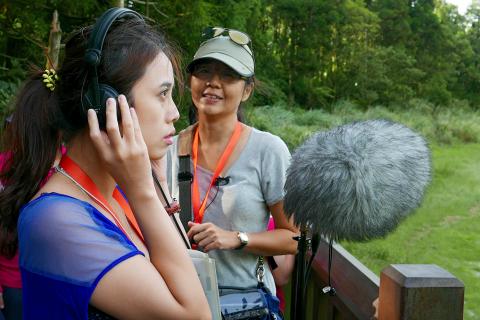
Photo courtesy of Taiwan Soundscape Association
To soundscape advocates, listening to nature and cultivating quietude can ironically be the best way to learn how to live with other people.
“Before we open our mouths to find fault with or chide someone, can we take pause?” asks Hsieh Wen-chi (謝文綺), a coordinator of Taiwan Listening Day, which for the past two years has been designated on July 17.
From today until August 24, the Taiwan Soundscape Association is turning up the volume on the nation’s aural heritage through a series of listening tours in Taipei, Taichung and Kaohsiung. Led by soundscape, wildlife and urban rejuvenation specialists, this is the first time that activities are taking place outside the capital.
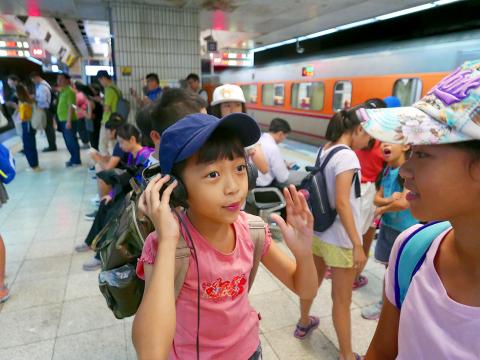
Photo courtesy of Taiwan Soundscape Association
The program starts today with a sunrise listening tour along the Alishan Forest Railway (阿里山林業鐵路) in Chiayi. Blending urban and rural settings, different tour sites reflect the varied tones of Taiwan’s development and co-existence of human and natural habitats.
In Taipei and Taichung, for example, participants learn to approach the familiar scene of each city’s Zhongshan Road with new ears. Other locations include Yangmingshan (陽明山) and Yuanshan (圓山) in Taipei as well as Taichung’s Dakeng trail (大坑) and Taichung Park (臺中公園). In Kaohsiung, highlights include a former navy ship-making facility and the endangered Cieding Wetlands (茄萣濕地), home to the black-faced spoonbill.
Soundscape advocates want to equip participants not just with a deeper capacity for listening, but also a deeper respect for their fellow creatures.
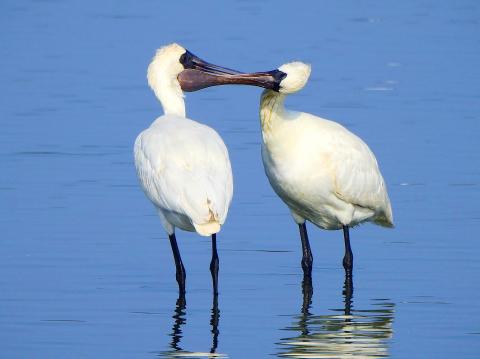
Photo: CNA
“Sound demonstrates the power struggle between humans and nature,” Lin says.
For Laila Fan (范欽慧), founder and chairperson of the Taiwan Soundscape Association who first led the push for a “quiet mountain trail” in 2013, listening deeply to natural as well as human-made sounds is a way of forging equality and environmental conservation
“Sounds of nature tend to be interpreted as the background music to human activity,” Fan says. “Through Taiwan Listening Day, we are elevating them to the same position as human-made sounds.”
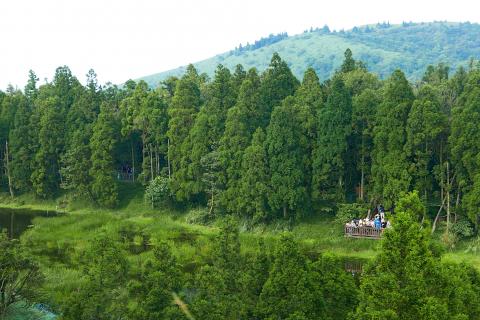
Photo courtesy of Taiwan Soundscape Association
As Taiwan continues to develop, those sounds are also changing. Hsieh says that local parks are increasingly transforming into gathering places for migrant workers. Rather than keeping migrant communities at a distance, a sound tour of Taichung Park seeks to reacquaint locals with their changing city.
“[Migrant workers] will continue to interact closely with us,” Hsieh says. “There’s no question about it. So we have to pursue more cultural exchange and demonstrate Taiwan’s diversity.”
The young are a natural audience for the activities, given the interactive nature of learning about heritage and history through sound. But soundscape advocates say that encouraging adults to listen more keenly to the voices of the younger generation is an objective in itself.

Photo courtesy of Wade Lee
“Most young people are always being informed or told of others’ thoughts and opinions,” says Tu Chun-ching (凃峻清), National Taiwan University history undergraduate and editor-in-chief of Rail Youths (鐵道青年) magazine. “As youths, we hope for the possibility of hearing other types of sounds.”
Countries around the world have long primped their skylines and landscapes for global consumption. Soundscapes are rarely given much consideration, although Fan says they can be as unique as a fingerprint.
In Taiwan’s case, that may be a matter of national pride and survival.
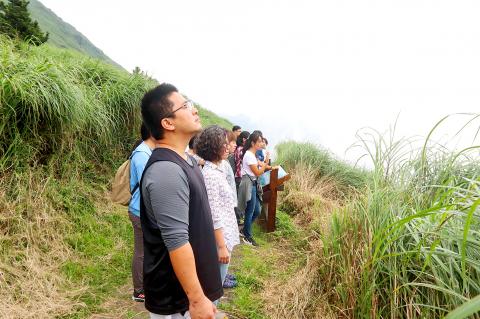
Photo courtesy of Taiwan Soundscape Association
“Taiwan’s voice is not listened to by the rest of the world,” Fan says. “Even if the world can’t hear us, we should at least be willing to hear ourselves.”
■ Tours are conducted in Mandarin. All tours in Taipei are fully registered, while some places remain for tours in Taichung and Kaohsiung. Most are free, but online registration is required at: www.soundscape.org.tw/2019-listening-day.

May 26 to June 1 When the Qing Dynasty first took control over many parts of Taiwan in 1684, it roughly continued the Kingdom of Tungning’s administrative borders (see below), setting up one prefecture and three counties. The actual area of control covered today’s Chiayi, Tainan and Kaohsiung. The administrative center was in Taiwan Prefecture, in today’s Tainan. But as Han settlement expanded and due to rebellions and other international incidents, the administrative units became more complex. By the time Taiwan became a province of the Qing in 1887, there were three prefectures, eleven counties, three subprefectures and one directly-administered prefecture, with

It’s an enormous dome of colorful glass, something between the Sistine Chapel and a Marc Chagall fresco. And yet, it’s just a subway station. Formosa Boulevard is the heart of Kaohsiung’s mass transit system. In metro terms, it’s modest: the only transfer station in a network with just two lines. But it’s a landmark nonetheless: a civic space that serves as much more than a point of transit. On a hot Sunday, the corridors and vast halls are filled with a market selling everything from second-hand clothes to toys and house decorations. It’s just one of the many events the station hosts,

Two moves show Taichung Mayor Lu Shiow-yen (盧秀燕) is gunning for Chinese Nationalist Party (KMT) party chair and the 2028 presidential election. Technically, these are not yet “officially” official, but by the rules of Taiwan politics, she is now on the dance floor. Earlier this month Lu confirmed in an interview in Japan’s Nikkei that she was considering running for KMT chair. This is not new news, but according to reports from her camp she previously was still considering the case for and against running. By choosing a respected, international news outlet, she declared it to the world. While the outside world

Through art and storytelling, La Benida Hui empowers children to become environmental heroes, using everything from SpongeBob to microorganisms to reimagine their relationship with nature. “I tell the students that they have superpowers. It needs to be emphasized that their choices can make a difference,” says Hui, an environmental artist and education specialist. For her second year as Badou Elementary’s artist in residence, Hui leads creative lessons on environmental protection, where students reflect on their relationship with nature and transform beach waste into artworks. Standing in lush green hills overlooking the ocean with land extending into the intertidal zone, the school in Keelung